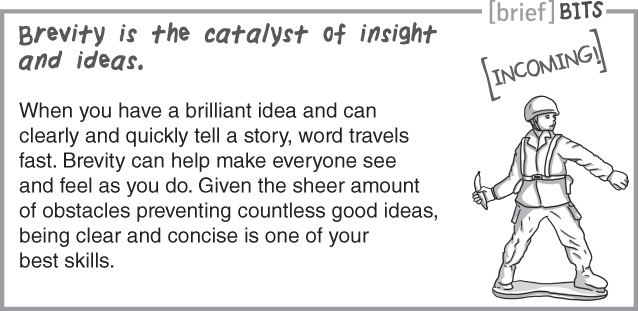Chapter 15
Whose Bright Idea Was That Anyway?
One should use common words to say uncommon things.
—Arthur Schopenhauer
Long story, short. The best ideas are explained simply.
Your Big Idea
A number of years ago, my older sister had an inspiration for a device to track items when you lost them. She excitedly revealed her big idea during a holiday gathering. She's not an inventor, but she spent the entire dinner talking about why this device would be a huge hit and how it would make millions of dollars.
When I asked her the (obvious) question about exactly how it would work, however, she quickly got flustered and offered up no details.
“It's going to make millions,” she said defensively. “Trust me, it will.”
Her excitement in that moment reminded me of many executives I've seen who are passionate about a big idea they have—yet are missing key parts of the story. Leaders of organizations will enthusiastically explain a new strategy, mission, set of values, or culture—but because they don't include the important information about how it's going to happen, they lose everyone in the process. Then they can't understand why more people don't share their view and cannot get on the same page.

Brevity plays an essential role in framing and sharing a big idea by making it easy to understand and quick to explain. Brevity keeps an idea's brilliance from getting lost in high-level hype or buried ...
Get Brief: Make a Bigger Impact by Saying Less now with the O’Reilly learning platform.
O’Reilly members experience books, live events, courses curated by job role, and more from O’Reilly and nearly 200 top publishers.

